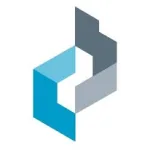In-person vs. online: Why face-to-face matters in KC real estate
Yes, I actually do know how to have a conversation.
Kind of a silly statement, I realize, but as a Millennial in the workforce (with Generation Z right behind me), the stereotypes run rampant: We’re always buried in our phones, we can’t actually talk face-to-face, we’re terrified to make a phone call.
While I can’t speak for every member of these generations – and I’ve definitely met a few who do fit that mold – I know firsthand how important personal connections can be.
And as I’ve learned in my years with Copaken Brooks, if you hope to succeed in commercial real estate (especially in Kansas City), you better get comfortable unplugging.
Online tools, offline results
Now, I’m just as connected as the next 20-something. The difference is that what others may call “screen dependency,” we see as tools for collaboration. This next evolution of workplace communication tech can be a powerful force in the hands of digital natives.
The real strength, however, lies in the ability of these tools to facilitate more effective non-digital connections. Technology should add another arrow in your quiver but should never be the only answer. There are plenty of people who really see themselves as only analog or only digital, but it’s more about using online to enhance offline.
Mark Shapiro, host of the podcast, “Are You Being Real,” explains in Thrive Global:
“Online communication is an amazing tool for making initial contact, as well as for ‘in-between’ correspondence, which can help sustain a connection over time and distance. But … connecting face-to-face is still the most meaningful, rewarding and opportunity-rich decision you can make.”
I know how tempting it can be to just use online networking platforms as a crutch, but they’ll never compare to the power of face time. Despite all the tech advances we come up with, we’re still human at the end of the day, and that kind of interaction – that chance to truly connect – is hard to replicate over Wi-Fi.
This isn’t just the opinion of a Gen Z-er, either; it’s backed by science: The Harvard Business Review reported that 87% of professionals believe closing a deal requires an in-person interaction, and 95% believe that’s the only way to build a solid relationship over time.
And while you may be proud of your new LinkedIn headshot, the Income Center for Trade Shows has proven that your new connection is twice as likely to remember you if you’re able to shake hands with that person. Carol Kinsey Goman, PhD, elaborates for the American Management Association:
“Touch is the most primitive and powerful nonverbal cue. Touching someone on the arm, hand or shoulder for as little as 1/40 of a second creates a human bond. In the workplace, physical touch and warmth are established through the handshaking tradition, and this tactile contact makes a lasting and positive impression.”
To take advantage of this kind of research, I try to bridge the gap between online and offline interaction. I spend time at a lot of events, shaking hands, creating that initial face-to-face connection. Then I leverage this connection on a site like LinkedIn, where I connect with that person again, this time digitally. This keeps the connection fresh and reminds them that the super-smart real estate professional they met the other day (whose name they just can’t seem to remember) was me. This becomes a launchpad to connect further by setting up a more personal meeting, which allows us to have a more in-depth conversation about ourselves, our businesses and how we can work together to do better deals.
Joining a rich real estate tradition
Despite my relatively short time in commercial real estate, I’ve already grown a deep respect for the history and relationships that have formed the foundation of our local industry. Going back to our founding by Herman Copaken in 1922, the team here has seen countless advances and changes. Yet, by recognizing the value of personal relationships – something that’s never changed through human history – we’ve weathered the ups and downs of the market and built a stronger Kansas City.
I’m excited to be part of such an accomplished team and a robust local industry—and maybe break a few stereotypes through some good old-fashioned conversation.








